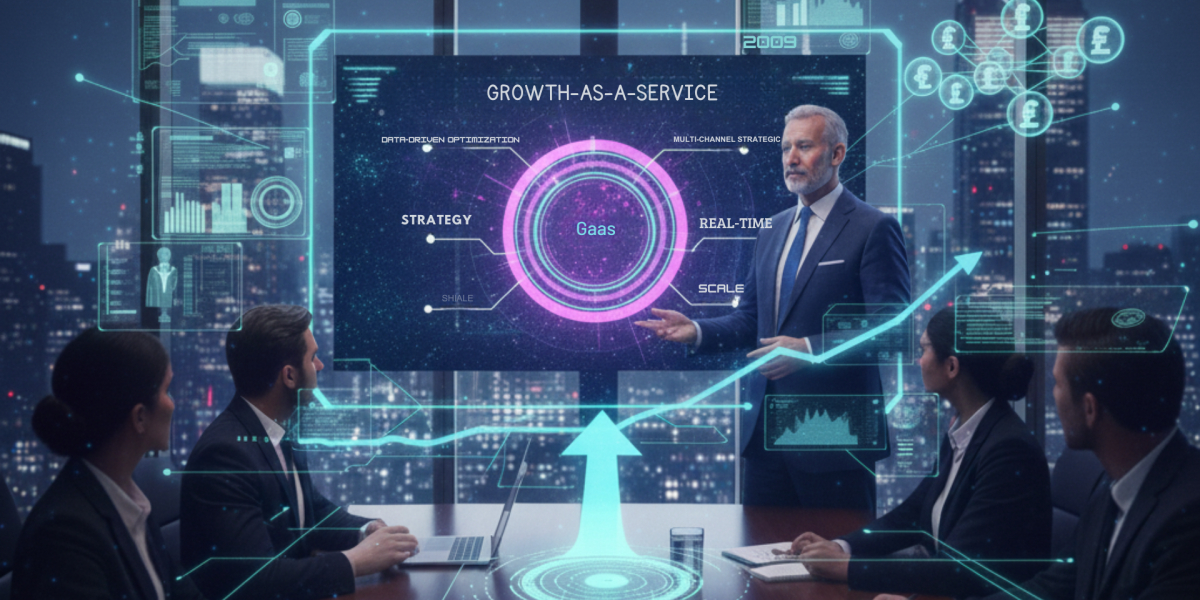Cybersecurity Risk Management: Recognizing and Alleviating Threats
Technology | 09-05-2025 | Motif Creatives

It is crucial to consider how protected your personal or business information is in this age of technology. Every click, login, and transfer of information performed by individuals or organizations may incur cyber risks.
The greater our dependence on technology, the greater the likelihood of a cyber-attack. These attacks can lead to loss of finances, reputational harm, and even litigation.
Managing cybersecurity risks is now fundamental for detecting such risks and controlling their impact. This article focuses on how we can identify risks associated with cybersecurity and the most appropriate actions to take in response as individuals and as a business.
Understanding Cybersecurity Risk
Cybersecurity risk is the probability of loss or damage arising from a cyber-attack or data breach. This type of risk can relate to systems, networks, or data. The cause might be external, such as phish attempts, hacking, malware, and other such malicious software; or it can be internal.
If, within an organization, employees turn against one another, then the risk is internal. For a business, even minor weaknesses can spell disaster. Knowing the type and source of risk is fundamental for developing an adequate plan in cybersecurity. Some common dangers include unauthorized intrusion, ransomware, and denial-of-service (DoS) attacks.
Why Cybersecurity Risk Management Matters
Organizations without proper risk controls are exposed to cyber-crime risks. A single attack could halt business processes, expose confidential information, and devastate customer confidence. Risk management helps organizations figure out how to identify, evaluate, and respond to risks before they cause damage.
It works best when resources are concentrated in the appropriate areas. Protecting data with effective risk management and legal and regulatory conditions is attained simultaneously. Risk management is not just about protection, but also preparedness.
Step 1: Identifying Cybersecurity Risks
Every security strategy must include risk identification as a separate activity. This includes establishing an inventory of all systems and digital assets, as well as evaluating potential sources of threats. This step addresses the following critical queries: What data do we store? Who can access it? and, where are the weak points? Firewalls, Antivirus applications, and periodic scans for vulnerabilities help mitigate risks. Other than electronic documents, human aspects are also crucial. An employee can put the entire organization at risk by clicking a single malicious link or using a weak password.
Step 2: Risk Assessment and Prioritization
Assessing the likelihood and possible repercussions of risks comes after identifying them. Not all risks pose the same threat level. Some risks may be trivial, while others can be disastrous. Using risk assessment techniques such as risk scoring and matrices aids in prioritizing the threats. With this approach, an organization can devote their attention to addressing the challenges that are most critical. Take for instance, data breaches; the risk posed by data breach is higher than that of system slowdown.
Step 3: Developing a Risk Mitigation Plan
A threat assessment entails determining the potential vulnerabilities of a system and hazards that can exploit those vulnerabilities prevalent in organization. Apart from updating security software, the plan could consider other measures such as employee training, more robust access restriction controls, and so on. Moreover, encryption of sensitive information, two-factor authentication, and periodic back-ups are common practice. It is often used to ensure that attacks are less probable and if they do occur, the damage inflicted will be minimal. To balance financial risk, businesses may resort to cyber insurance. Businesses must be able to respond to fundamental shifts in technology or the threats themselves, with a flexible strategy.
Step 4: Implementing Controls and Monitoring
All important controls require proper action. Implementing control means the setting up of security tools as well as procedures which safeguards the digital assets. Standard tools include firewalls, intrusion scanning systems, and even endpoint protection software. However, monitoring must be stressed, too. Help in the spotting of suspicious activities and enable a speedy response in the event that something goes awry.
Step 5: Incident Response and Recovery
It is no news that having zero security is impossible for any operating system. For that reason, guidelines on a clear response strategy are a necessity. The established procedures guide what actions to take on cyberattacks such as how to contain the threat, notify the pertinent office people, on top of recovering the captured systems. Movement criteria establishes roles and responsibilities, lists the contacts, and sets the communication tactics. Recovery and damage control vary with sped under quick action. When the needed action is carried out, it elevates the recovery time frame. Systems are then thoroughly analyzed in a post-action review to identify the failures in cyber defenses, aiming issues.
Cybersecurity Risk Management for Small Businesses
Small businesses are ideal candidates for hackers. They have limited funds and a less sophisticated system of defense. However, they possess critical information like customer’s information, payment details, and business strategies. Balanced cybersecurity risk management strategies allow for optimal spending without compromising cuts. Strong passwords, software updates, and employee training are effective measures. Even small online shops, including those using WooCommerce banner images to promote their products, must secure customer private information and transaction details.
Role of Employee Awareness
Employees are often a cybersecurity liability. A simple password or careless clicking may grant full access to criminals. That is why any business needs regular training sessions. Workers must be taught how to identify phishing mails, create strong passwords, and report abnormalities. Targeted training guarantees that everyone, including IT and customer service, understands the challenges proper. Shifting mindsets to security-first enhances Attention towards organizational responsibility.
Common Cybersecurity Tools and Technologies
Different organizations use varying types of tools to manage risks effectively:
1. Firewalls
Like guards, firewalls protect your network. They guard incoming and outgoing data traffic. Firewalls can permit safe connections while blocking unsuspicious traffic. These can be in form of hardware or software firewalls. To enhance their protective features, most companies utilize both.
2. Antivirus and Anti-malware Software
These programs attempt to identify and remove intrusive software from devices. Files can be stolen or damaged by viruses, worms, trojans, and spyware. New threats are captured by regularly updating the antivirus software. Alerts are issued once threats are detected while monitoring happens at the background.
3. Encryption Tools
Data that is sensitive, such as passwords, emails, or payment information, can be protected by encryption. Even when hackers steal the data, without the decryption key, they won’t be able to read it. Encryption is very common for banking, messaging apps, and e-commerce.
4. Multi-Factor Authentication (MFA)
Unlike single password protection, multi-step verification makes entering an account more strenuous. For instances, a code may be sent to your phone after entering your password which you also need to type in. This technique prevents hackers from accessing user accounts with just passwords.
5. Virtual Private Networks (VPNs)
VPNs help secure internet activity by masking your IP address, as well as encrypting the data you send. This is advantageous for public Wi-Fi, which tends to be insecure. VPNs are widely embraced by remote employees and frequent travelers.
6. Intrusion Detection and Prevention Systems (IDPS)
These tools track networks and systems for any suspicious activity. An IDS is designed to notify you if something abnormal is going on. An IPS is capable of neutralizing the threat automatically. They serve like a security camera-alarm combination for your network.
7. Security Information and Event Management (SIEM)
SIEM combines information from firewalls, servers, applications, etc. to analyze for any possible threats and generate reports. SIEM assists the IT department in crisis management by making it easier to analyze and respond to problems in real time.
8. Patch Management Tools
New software often comes with vulnerabilities that can be exploited by hackers. These tools aid in the application of routine changes to antivirus software, which help rectify these vulnerabilities. Automated updates ensure the system stays defended without delay.
Compliance and Legal Considerations
The realm of cybersecurity encompasses more than just safeguarding sensitive information; it also ensures that a business operates within legal frameworks. multiple legislations in the world are quite strict concerning data collection, storage and utilization.
For instance, in Europe, General Data Protection Regulation (GDPR) safeguards personal data and allows individuals to control access to their information. In the United States, HIPAA shields health records, and PCI DSS sets forth protocols for the treatment of credit card data. Noncompliance with these regulations could spell trouble for the company through hefty penalties, lawsuits, or in severe cases, being forced to cease operations.
Organizations seeking to mitigate these challenges need to address legal compliance in their risk management strategies. This entails understanding applicable laws, updating and maintaining systems accordingly, and thorough documentation.
In some instances, it is necessary for companies to engage legal practitioners or independent auditors to assess compliance with laws. Legal compliance requires constant upkeep, and trust is earned from customers when their concerns about privacy and safety are prioritized.
Importance of Continuous Improvement
Establishing cybersecurity is not a “set-it-and-forget-it” endeavor. Hackers are always devising new ways of breaching different systems and with the advancement of technology, new risks also emerge. Hence, businesses are required to constantly seek new methods to bolster their cybersecurity.
This goes along with software updates, performing checks for system vulnerabilities, rewriting obsolete policies, and amending aged security policies. Also, training employees on a routine basis is critical as phishing and other sophisticated attacks exploit human mistakes.
With the introduction of cloud computing, IoT devices, and even artificial intelligence, new possibilities emerge as well as new hurdles to overcome in security. These changes also require the cybersecurity framework to adapt.
However, new AI technologies must be securely trained and data in cloud storage locations needs to be properly encrypted. Audits, or routine system checks, ensure organizations agilely mitigate perils before they aggravate into larger concerns.
Achieving satisfactory cybersecurity is only possible through processes that evolve over time. Companies must steer away from looking for effortless solutions and instead adopt a strategy designed for the long-term.
Businesses which focus on constantly enhancing their security features tend to better handle unforeseen threats and recover more swiftly from security breaches. Being proactive, consistently revising system policies, and applying lessons learned from previous mistakes work in achieving a more fortified digital realm.
Risk Management in Remote Work Environments
The shift to work-from-home arrangements has increased overall cybersecurity perils. Personal devices and residential Wi-Fi networks are easy targets for cyberspace freeloaders. Employees’ perimeter security borders have moved, and companies must revise management frameworks with these realities. Requirements for remote work should include antivirus equipped as well as policy-controlled. These utilize strong passwords, mobile device management, secure remote VPNs, and demand regular online training. Reduced information risks come from continuous remote monitoring as well facilitating training enhance reducing risks. Advanced management of remote regions has now become an essential element in every risk management system.
Managing Vendor and Third-Party Risk
Exterior vendors are commonly used to provide services, including cloud storage, payment processing, and IT support. These associates, however, can be a source of security vulnerabilities. If a vendor does not practice proper cybersecurity, your data can be in jeopardy. This is why managing vendor related risks is crucial. Companies should analyze security policies of their partners, implement as well as demand adherence to certain policies and standards, and control access in the case of proprietary information. Construction of a secure perimeter must encompass all who access your information.
Future Trends in Cybersecurity Risk Management
Advancements like AI technologies work with smarter threats to telecom equipment. In detecting patterns and predicting AI-based attacks, Machine Learning is actively utilized. Increasingly, businesses are adopting zero-trust frameworks which operate on the principle of Trust No One. Also, there is a mass migration of services to the cloud, which needs new ways of securing the information. Cybercriminals escalating their attacks prompt for change in defending strategies; management techniques need to undergo constant evolution. The backbone of everlasting defense is unremitting vigilance and flexibility.
Conclusion
The risk management of cyber security issues is not limited to large corporations; it extends to all levels of business. Be it a small online shop or a global tech company, any digital interface poses an opportunity for attack. Timely recognizing and addressing issues minimize the amount of risk, protects data, avoids financial loss, and builds confidence. The process begins with identifying the risks, assessing them, devising a plan, applying mitigations, and finally preparing for potential negative scenarios. Staying secure, with the right tools and a proactive employee training culture, is indeed achievable. When it comes to a world laden with cyber threats, preparation is the ultimate line of defense.



.jpg)

.jpg)
.jpg)
.jpg)
.jpg)
.jpg)
